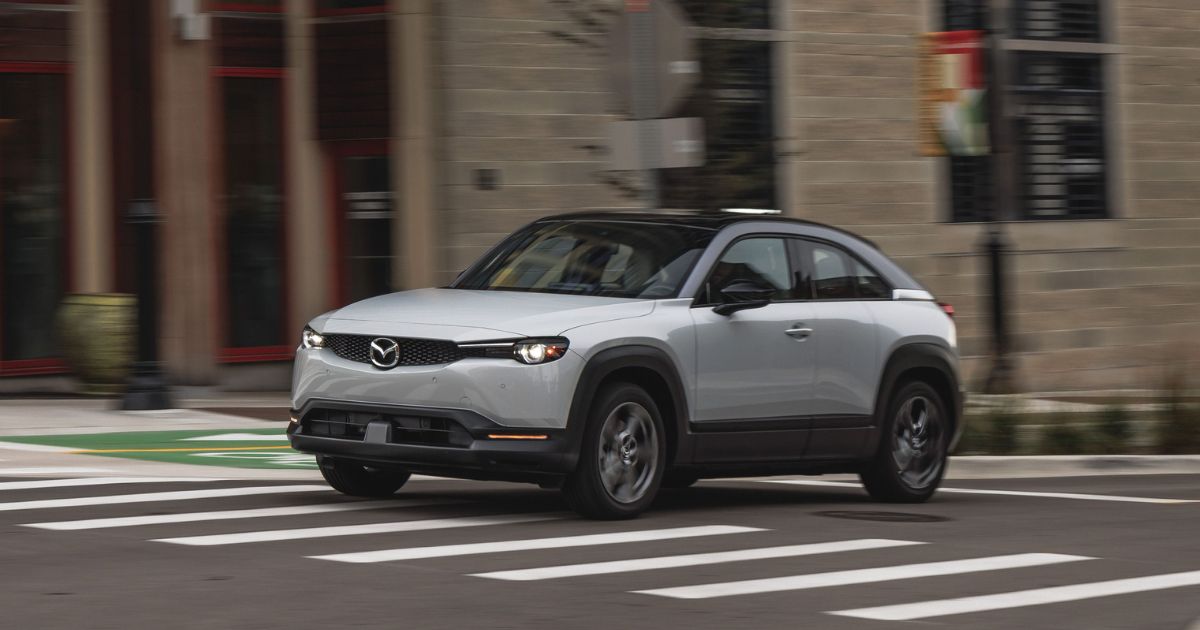Leftists want to repeal all kinds of legal concepts — the Electoral College, the nine-justice U.S. Supreme Court, even that dusty old Constitution itself.
But they can’t repeal the laws of physics.
Which is why the brave new world of electric vehicles that we’re told will solve all our energy problems is having a hard time fulfilling what has been promised.
An EV may have its place, as Car and Driver noted in a review of the electric 2022 Mazda MX-30.
That MX-30, Mazda says, is designed for a daily commute of about 30 miles in terrain without grades or inclines and with opportunities for charging at each end of the journey.
That’s practical.
But take the MX-30 to the hills or for a lengthy drive and you’ll find it’s slow — and despite an EPA range estimate of 100 miles between charges, it only went 70 miles in a Car and Driver 75-mile-per-hour road test.
So if you want to take your Mazda EV — whose starting price is about $33,500 — for a quick trip down the interstate, you’d better plan your trip carefully, because the laws of physics stretch further than the car will go.
Tested: 2021 @MazdaUSA MX-30 EV sparks interest but comes up short: https://t.co/7L8SVqzUQW pic.twitter.com/01lhqH8wNP
— Car and Driver (@CARandDRIVER) December 13, 2021
Range seems to be the major direct problem with EVs the left says will protect both the planet and our pocketbooks. (Imagine! No more paying for gasoline! Ever. Again.)
The distance between charges is the most important metric in judging EVs, Car and Driver said — but the laws of physics keep interfering.
A 2022 Rivian R1T has an EPA distance rating of 314 miles, but a Car and Driver test resulted in only 220 miles. Worse, put a 3-ton trailer behind the nearly $80,000 product of an Irvine, California, startup and one couple found a 2,700-mile Detroit-to-Los-Angeles trip required the R1T to stop every 100 miles for a charge.
And on YouTube, Fast Lane Truck showed how an electric Ford F150 pickup made it only 85 miles towing a 3-ton trailer.
To be fair, one electric car — the 2022 Lucid Air — has an EPA distance rating of 520 miles, and a Car and Driver test got it to 410 miles, beating a Tesla Model S that made 320 miles.
While batteries continue to improve, their restricted ability to provide range has plagued the use of electric propulsion in automobiles for more than a century.
A solution might be the hybrid. As railroads discovered early in the 20th century, there is a realization of the effectiveness of electric motors receiving their power from onboard internal combustion engines (diesels in the case of the railroads).
The hybrid can be a partial solution to the key drawbacks of EVs – range, demands upon an already shaky electrical grid and perhaps greater costs in developing and disposing of batteries.
But to leftists, the problem remains with the fuel required to power the hybrid’s gasoline engines.
As we’ve been told by President Joe Biden, all fossil fuels are in the process of being stamped out.
So we must live with imaginative but impractical ideas — no matter what the laws of physics say.
This article appeared originally on The Western Journal.

























 Continue with Google
Continue with Google